Vietnam has an unfortunate reputation in tea circles.

Not entirely undeserved. Like countries such as Thailand, one of the ways they’ve tried to establish a tea growing/producing identity is by emulating the practices of others. Their greatest influences—naturally—are their neighbors. In this case, China and Taiwan.
From China, they aped the style of Yunnan shou puerh. They must’ve figured, “Well, we’ve provided old tree leaf material to them for decades, might as well do it ourselves.”
The Taiwanese influence, though, that’s a bit more puzzling. I’m not sure when they started importing Taiwanese cultivars, or when artisans took up their oolong trade, but such offerings grew in visibility around the time when tea blogging took off as a medium. Circa 2009-ish. Unlike with—say—Thailand or Myanmar, though, Vietnam’s Taiwanese adjacent/inspired oolongs were just as good as the real deal. In one memorable case, a Vietnamese oolong even won a competition . . . until the status was revoked when it was revealed not Taiwanese in origin.
I’ve been covering Vietnamese teas for nearly a decade. I’ve tried many different teas that echoed many different styles; some great, some good, some . . . Snow Shan green tea. It seems the tea producers of Vietnam have reached a plateau of sorts. Time for them to stop imitating and start innovating.
And I think I tried two such examples.
Hatvala—my go-to source for Vietnamese anything teas—posted this picture on their various social media platforms.

Image owned by Hatvala.
It was an oolong made by one of their producing partners in Moc Chau, Son La province. While the producer usually worked with Qing Xin plants (originally hailing from Taiwan), that wasn’t the case here. The leaf material hailed from Cho Long, a region between Moc Chau and the border with Laos. A region with old growth assamica tea forests.
Up until now, I think I’ve only had two—maybe three?—oolongs made from assamica. One of the biggest hurdles for making oolong from such leaf material is . . . well . . . the leaf material itself. Assamica, no matter the genetic strain, has a very distinct flavor profile. In most cases, producers have to work with that existing profile, not against it. This probably explains why assamica black teas and shou cha are so heavily altered, while sheng cha and white teas from such material work with the existing characteristics, and as minimally processed as possible.
Assamica leaf is tough, but if anyone could tame that bear, it was this producer. They produced easily one of my favorite red oolongs. Red Buffalo.
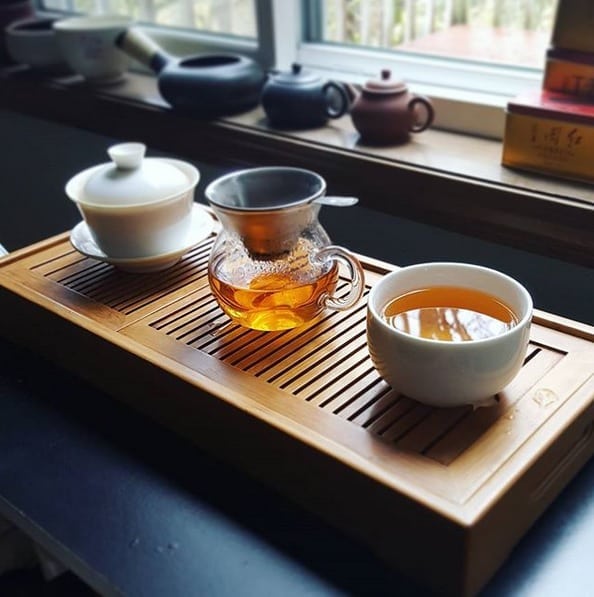
Well, that didn’t stop Hatvala’s Moc Chau producer from making an attempt. That didn’t stop me from expressing excitement at its very existence. And it didn’t stop Hatvala from sending some my way.
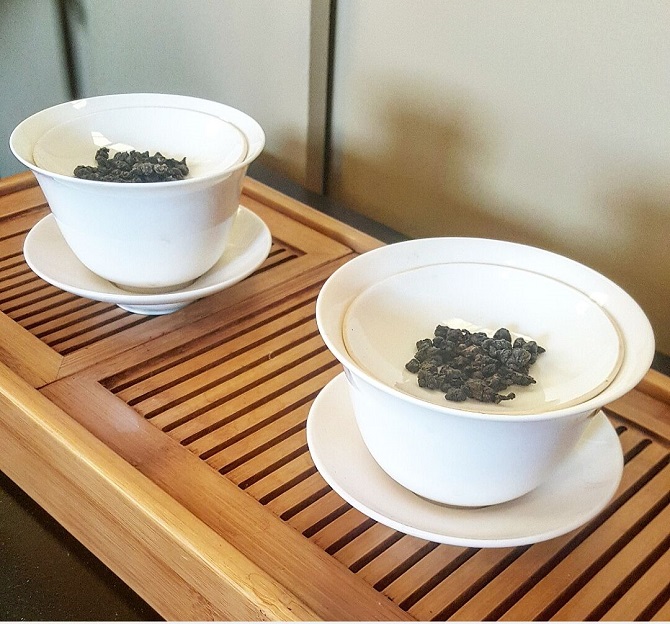
Two teas were sent to me—one called “Sun Bear”, the other dubbed “Moon Bear”. Both were named for endangered bear species native to Vietnam. Why? Hatvala sponsors Animals Asia, an organization known for creating and maintaining bear sanctuaries. Both the Sun Bear and Moon Bear are on the endangered species list due to habitat loss and deforestation. Buying both teas helps support those efforts.
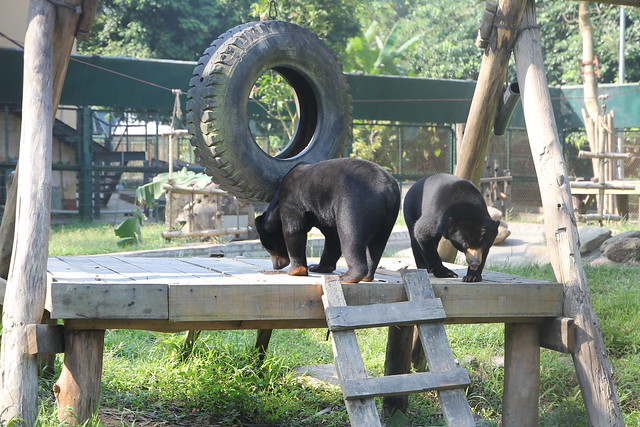
Image owned by Animals Asia.
For brewing, I approached both the same way: roughly a teaspoon worth o’ balls (hehe) in a 6oz. gaiwan, subjected to boiled water, with short(-ish) infusions of around thirty seconds. About what I would do for any sheng puerh or oolong. Since these were “technically” both, I figured that approach was apt.
This oolong looked every bit the darker Taiwanese neck-tied oolong it aspired to be. The aroma the rolled leaves gave off reminded me of a Hong Shui, but somehow toastier. There was caramel sweetness aplenty, but also something burlier, and a slight tickle of earthen astringency. Not much, though. The leaf-rolls themselves looked 75% oxidized; mostly brown with a bit o’ green peeking out.
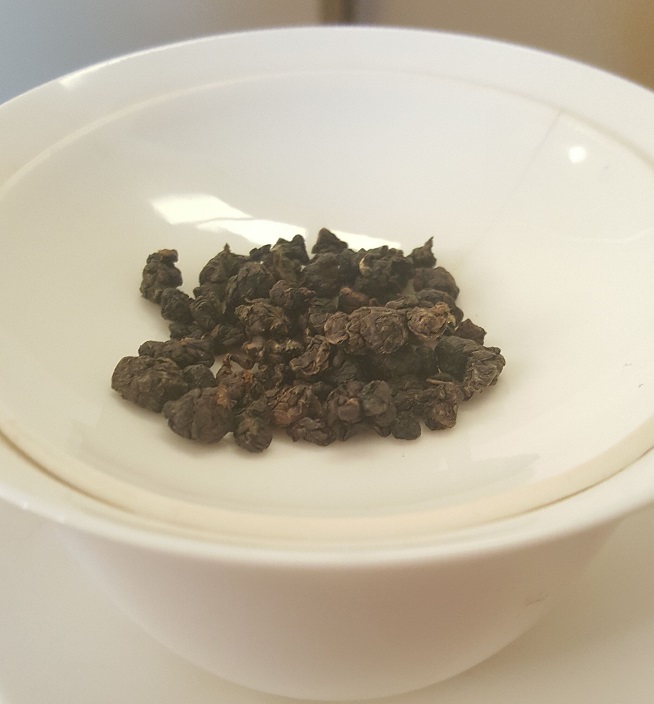
The liquor brewed to a deep amber, bordering on crimson. For the first infusion, the flavor was unlike anything I was expecting—not that I had any expectations. The intro was forest-like, mossy and floral, but that opened up to a fruity center that was almost ethereal. The finish curtsied with a bow of sweetness. Lingering sweetness; my favorite kind.
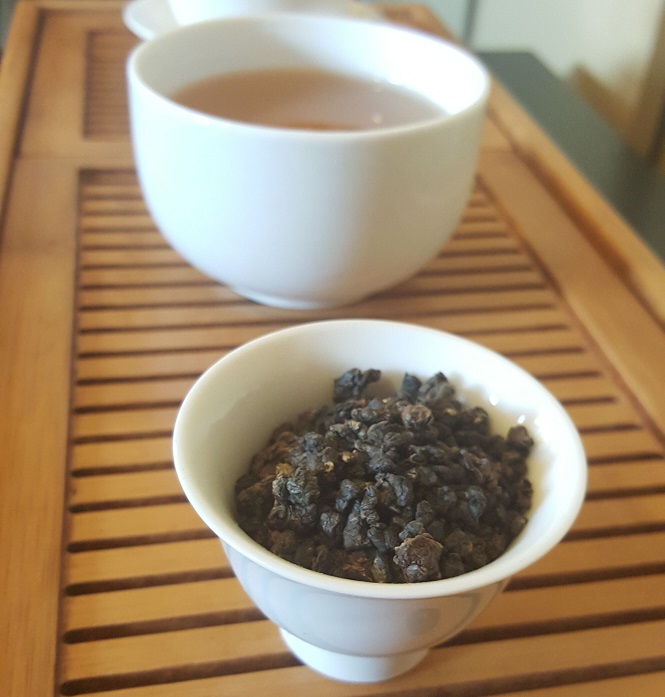
A second infusion took on more reliable red oolong notes with very little nuance, but plenty of layers. More of the assamica burliness showed up in this brew than the first. Of course, I had also dialed up the steep time a few seconds. Still sweet and smooth.
The moon bear leaves looked even darker, but possessed an aroma that was lighter than the Sun Bear. I smelled lilacs and butter. For the record, I don’t know what lilacs smell like, but that was the first flower that popped into my head on first whiff. So, lilacs, it is. While the leaves looked the same color as the Sun Bear, they were just a hint darker. No green in the fray.
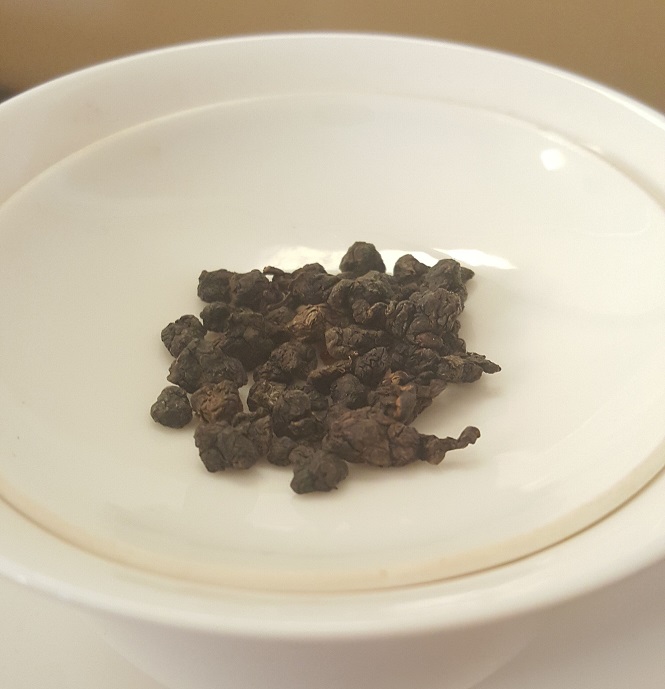
The Moon Bear was “like” the Sun Bear in some respects . . . but in reverse. The darker-seeming leaves resulted in a lighter liquor. Just straight-up bold amber. The steam aroma echoed some of the same floral and creamy notes of its sister bear. For the first infusion, the taste started off in completely different territory. The forefront reminded me, immediately, of a sheng maocha. Before I could settle on that impression, though, it transitioned into more oolong-y territory; floral, slightly fruity, and oddly creamy. Instead of settling on a requisite sweetness in the aftertaste, however, the finish was a little bit more savory.
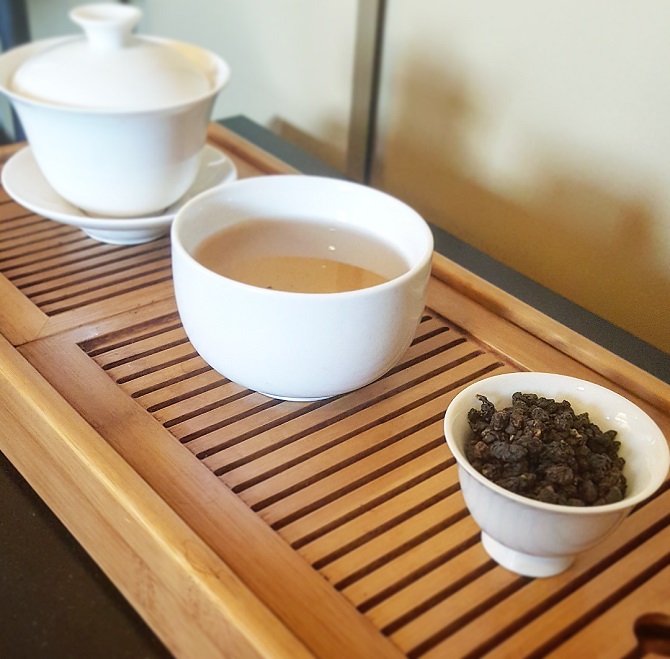
The second steep removed all oolong pretenses and went full-on assamica. Not in a sheng-y sorta way, more like a Moonlight white, but with the layers of an oolong still intact. As burly as the Sun Bear, but more lumbering in its pace when releasing its alternating earth-‘n-sweet notes. More Dong Ding-ish toasted vanilla shades also showed up on the finish.
Even at slightly longer, gongfoolish steeps, both teas lasted four infusions before losing color and flavor. At shorter, proper successive infusions, I believe these could’ve been stretched to six or eight.
If I were to choose a favorite, it would be the Sun Bear. It was the most “oolong” of the pair, retaining all the notes of a Hong Shui (or redder oolong) throughout the infusive abuse I subjected it to. Heavier than the Red Buffalo oolong (from the same producer), but less nuanced, yet more layered. The Moon Bear turned into an assamica characteristic tea early on, and pretty much stayed there. Not a detraction by any stretch, but—like Yunnanese oolongs I’ve had—there’d be no mistaking the leaf material used. Moon Bear was probably the most unique of the pair. The difference between the two is obviously in the roasting.
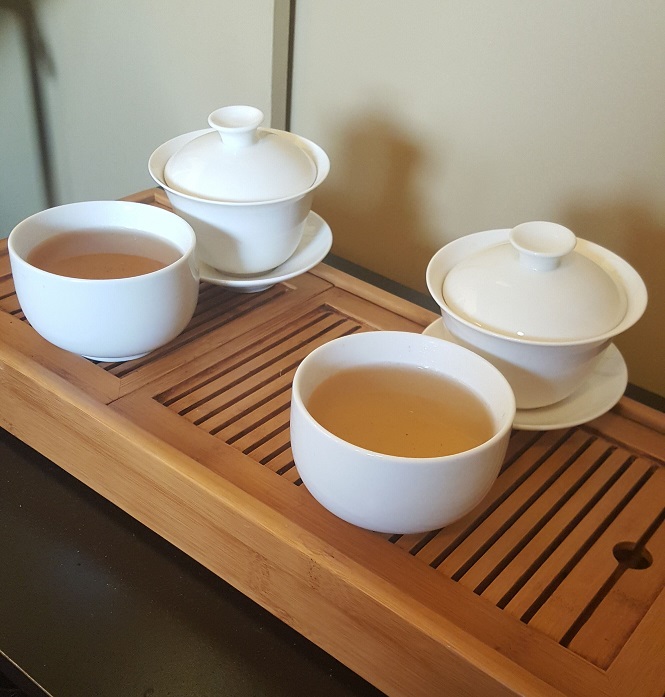
One thing is certain, though. At the end of this dual gongfoolish . . . uh . . . duel, my brain felt like it had been massaged by a small endangered bear. So, in that way, they both live up to their namesakes. As new innovations go, I’d call these a success.
To buy the Sun Bear oolong, go HERE.
To buy the Moon Bear oolong, go HERE.

Xavier
Sun Bear and Moon Bear? As long as they are not ghost ones, I can drink them.
Margo Huthcinson
I WANT some, they sound wonderful!